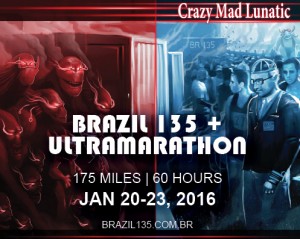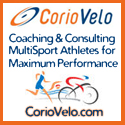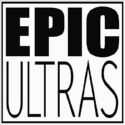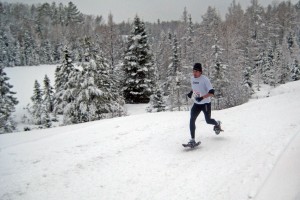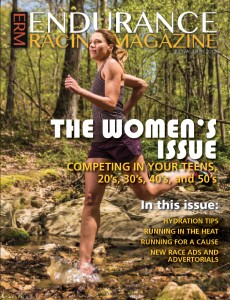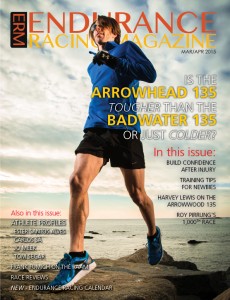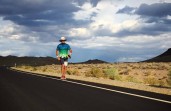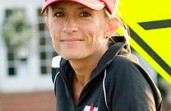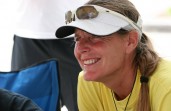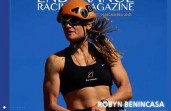“Nothings slowing down yet, Im only 30although I probably couldnt run a 4:08 mile like I did when I was 21; but when I was 21 I couldnt do a race that was over 2 hours, so I guess thats the tradeoff. A good old high school friend of mine, who is a cyclist, and I were joking around once about how as you age you get Old Man Power. The raw speed goes away as you age, but the power from doing this for years and years builds up and leads to incredible strength and endurance. Its really a beautiful thing.”
- Jared Scott
Jared Scott, a member of the 2012 United States National Team, competed in the 2013 La Ciaspolada snowshoe race in the Val di Non of Northern Italy on Jan. 6, 2013.
Scott, who classifies himself as a mountain, trail and snowshoe racer, competes in the 10k distance for snowshoeing and other races. The 30-year-old who now lives in Colorado has been competing in endurance races for years, and has found much success as an internationally recognized snowshoe racer.
Scott started running when he was 13 and was successful throughout high school. He ran in Division 1 in college for a top cross country program, moved to Flagstaff for grad school and got hooked on trail running. He even went to the Grand Canyon, which is near his then-home in northern Arizona, and started running and training there.
“When I started running in the Grand Canyon, my first run was down to the Colorado River and back up (~5000 ft elevation change in ~7 miles each way). It took me a few hours to do, and I was so exhausted that I came home and slept for 4 hours.”
But it wasn’t long before Scott has the record for running the Grand Canyon Rim to Rim race from the North Rim to the South Rim in 2011. He tried again for the record in 2012 and his friend broke his record by 15 minutes. Another friend also broke his record as he came in 3rd this year.
The same winter he started running in the Grand Canyon, there was a lot of snowfall in Northern Arizona. That winter, Scott was lucky enough get in with the local snowshoe company Kahtoola and test some snowshoes for them. This was Scott’s first experience cross-training in snowshoes on trails with 5 feet of snow on them. His switch to competitive snowshoeing started in the winter of 2009-10, with great success.
ERM caught up with Scott to ask him about his snowshoeing experiences.
ERM: What are some of the differences you see between snowshoeing and regular ultra distance racing – other than the gear, of course?
Scott: Its different, and it can be very tough because of the added weight and how much snow conditions can vary. Deep snow is really like running uphill. It can be highly anaerobic and its like running in slow motion. This is the typical snow youll encounter if you just go out in the woods and run. Groomed snow is extremely fast and is the kind of snow that many races have. Theres also hard-packed and icy, which is usually what youll encounter in the early mornings, and a lot of times you end up busting through the hard pack into soft powder. When snow warms up, it can be slushy and very wet and slow. There is also a thing called “sugar snow,” which happens when the snow blows; its tough to run in because its difficult to get traction in it. But I think the things that surprised me the most about snowshoe running is how much you actually can sink in the snow – I always thought I would float right on top – and that snowshoes are awesome for traction in the snow.
ERM: Wed also like to know a little about your training regimen.
Scott: I like to do a couple of tough workouts a week. I usually do one day of hill training; this is usually running up the steepest route I can find and doing it weekly to try to improve on my time. The other workouts I like to do are a fast 6-mile tempo run on a rolling course, and try to work down my times over the weeks. I also like to do at least one long run of around 1.5 to 2 and sometimes 3 hours during the week. The long run is probably the most consistent and most important workout I do. Hills are great when you need to get in shape in a hurry, and the tempos are good for feeling the grind of a race.
ERM: At this level, does anyone sponsor you for your snowshoe races?
Scott: Yes, Kahtoola Snowshoes and Inov-8 Shoes sponsor me.
ERM: Can you tell us a little about your work/life balance?
Scott: I’m married and have 3 dogs. I work full-time for the Bureau of Land Management as a GIS (computer mapping) Coordinator. To balance training with work, I like to run to and from work a couple of times a week, which is 5.5 miles one way. It kills two birds with one stone, because I get my training in while I commute.
ERM: What drives you and keeps you sustained during competition?
Scott: A lot of times its remembering while Im racing to have a good time. Its easy to get caught up in all the jitters and edginess of nervous runners on the starting line; but once Im in the race and Im on a beautiful trail climbing up some mountain, theres really no other place Id rather be. I love it.
ERM: Do you maintain a budget for racing and competition?
Scott: Yes, I budget, because racing is expensive. Also, I do try to win prize money to support the habit. Its tough to win prize money because there are so many good racers out there, so I do budget and choose my races carefully. When I travel I dont stay in expensive hotels. A lot of times I will share a hotel room with a friend or stay with a family willing to take in a racer, but many times Ill just rent a car that has a back seat that folds flat so I can sleep in the back. I sometimes bring a one-person lightweight tent with me, too, so I can just camp. I found that the car and camping is sometimes the easiest thing to do, because I can just do my own thing the night before and then show up and run fast the next morning. But its really my day job that allows me to afford to travel to races.
ERM: Tell us something about you that we wouldn’t know.
Scott: I stopped running for a month once because I was burnt out, but then got gall stones because I stopped doing life-sustaining things like remembering to drink water (because I would never forget to drink water before I would go run). So after that painful experience, I started running again – and I also remember to drink water.
ERM: Have you had any injuries or lingering issues?
Scott: I have arthritis in my big toe, but as long as Im doing some serious training, my toe usually feels fine. If Im not running very much, the pain gets worse. I used to be plagued for years with Achilles problems and planter fasciatis, but changing my running shoes to flat flexible shoes and correcting my running form fixed those problems.
Read more at:
http://outdoors.campmor.com/snowshoe-racing-in-the-united-states-2012/


